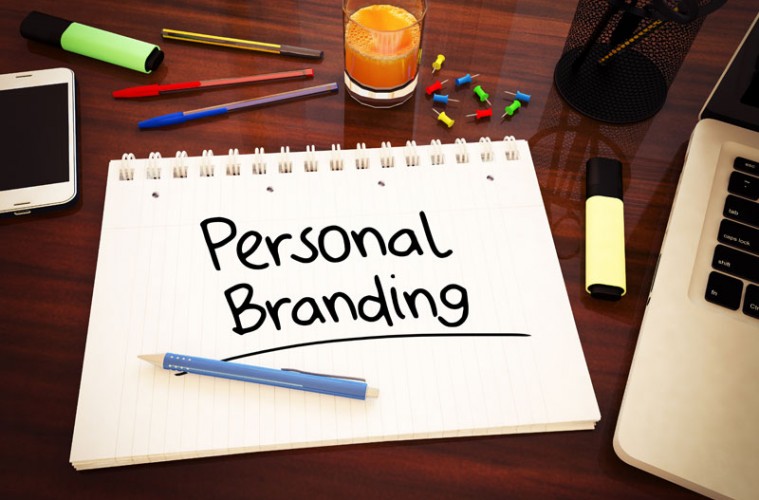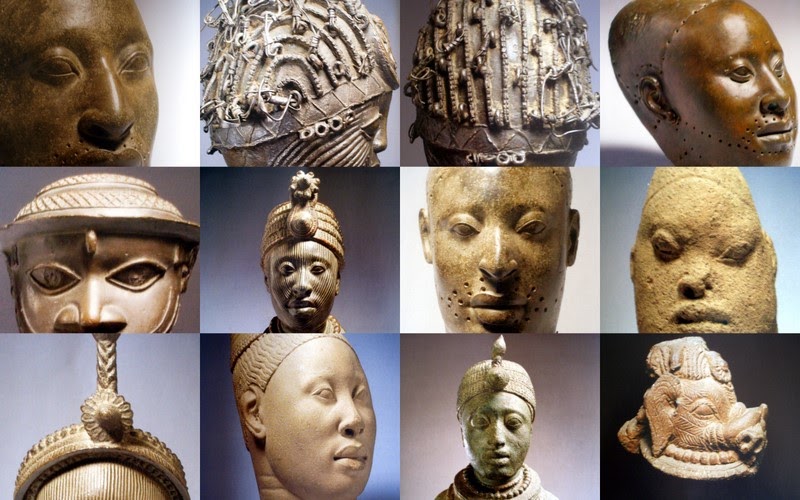William Henry Gates III (born October 28, 1955) is an American business magnate, investor, author, philanthropist, humanitarian, and principal founder of Microsoft Corporation. During his career at Microsoft, Gates held the positions of chairman, CEO and chief software architect, while also being the largest individual shareholder until May 2014.
Career
In 1975, Gates and Paul Allen launched Microsoft, which became the world’s largest PC software company. Gates led the company as chief executive officer till he stepped down in January 2000, but he remained as chairman and created the position of chief software architect for himself. In June 2006, Gates announced that he would be transitioning from full-time work at Microsoft to part-time work and full-time work at the Bill & Melinda Gates Foundation, which was established in 2000. He gradually transferred his duties to Ray Ozzie and Craig Mundie. He stepped down as chairman of Microsoft in February 2014 and assumed a new post as technology adviser to support the newly appointed CEO, Satya Nadella. Gates is one of the best-known entrepreneurs of the personal computer revolution.
Later in his career and since leaving Microsoft, Gates pursued a number of philanthropic endeavors. He donated large amounts of money to various charitable organizations and scientific research programs through the Bill & Melinda Gates Foundation. In 2009, Gates and Warren Buffett founded The Giving Pledge, whereby they and other billionaires pledge to give at least half of their wealth to philanthropy. The foundation works to save lives and improve global health and is working with Rotary International to eliminate polio.
Early life
Gates was born in Seattle, Washington on October 28, 1955. He is the son of William H. Gates Sr. (born 1925) and Mary Maxwell Gates (1929–1994). His ancestry includes English, German, Irish, and Scots-Irish. His father was a prominent lawyer, and his mother served on the board of directors for First Interstate BancSystem and the United Way. Gates’ maternal grandfather was J.W, Maxwell, a national bank president. Gates has one older sister, Kristi (Kristianne), and a younger sister, Libby. He is the fourth of his name in his family but is known as William Gates III or “Trey” because his father had the “II” suffix. Early on in his life, Gates observed that his parents wanted him to pursue a law career. When Gates was young, his family regularly attended a church of the Congregational Christian Churches, a Protestant Reformed denomination. The family encouraged competition; one visitor reported that “it didn’t matter whether it was hearts or pickleball or swimming to the dock … there was always a reward for winning and there was always a penalty for losing”.
At 13, he enrolled in the Lakeside School, a private preparatory school. When Gates was in the eighth grade, the Mothers’ Club at the school used proceeds from Lakeside School’s rummage sale to buy a Teletype Model 33 ASR terminal and a block of computer time on a General Electric (GE) computer for the school’s students. Gates took an interest in programming the GE system in BASIC and was excused from math classes to pursue his interest. He wrote his first computer program on this machine: an implementation of tic-tac-toe that allowed users to play games against the computer. Gates was fascinated by the machine and how it would always execute software code perfectly. When he reflected back on that moment, he said, “There was just something neat about the machine.” After the Mothers Club donation was exhausted, he and other students sought time on systems including DEC PDP minicomputers. One of these systems was a PDP-10 belonging to Computer Center Corporation (CCC), which banned four Lakeside students – Gates, Paul Allen, Ric Weiland, and Kent Evans – for the summer after it caught them exploiting bugs in the operating system to obtain free computer time.
At the end of the ban, the four students offered to find bugs in CCC’s software in exchange for extra computer time. Rather than use the system via Teletype. Subsequently, Gates went to CCC’s offices and studied the source code for various programs that ran on the system, including programs in Fortran, Lisp, and machine language. The arrangement with CCC continued until 1970 when the company went out of business. The following year, Information Sciences, Inc. hired the four Lakeside students to write a payroll program in COBOL, providing them computer time and royalties. After his administrators became aware of his programming abilities, Gates wrote the school’s computer program to schedule students in classes. He modified the code so that he was placed in classes with “a disproportionate number of interesting girls.” He later stated that “it was hard to tear myself away from a machine at which I could so unambiguously demonstrate success.” At age 17, Gates formed a venture with Allen, called Traf-O-Data, to make traffic counters based on the Intel 8008 processor. In 1972, Bill Gates served as a congressional page in the U.S. House of Representatives.
Gates was a National Merit Scholar when he graduated from Lakeside School in 1973. He scored 1590 out of 1600 on the Scholastic Aptitude Tests (SAT) and enrolled at Harvard College in the autumn of 1973. He chose a pre-law major but took mathematics and graduate level computer science courses. While at Harvard, he met fellow student Steve Ballmer. Gates left Harvard after two years while Ballmer would stay and graduate magna cum laude. Years later, Ballmer succeeded Gates as Microsoft’s CEO. He maintained that position from 2000 until his resignation from the company in 2014. In his second year, Gates devised an algorithm for pancake sorting as a solution to one of a series of unsolved problems presented in a combinatorics class by Harry Lewis, one of his professors. Gates’ solution held the record as the fastest version for over thirty years; its successor is faster by only one percent. His solution was later formalized in a published paper in collaboration with Harvard computer scientist Christos Papadimitriou.
Gates did not have a definite study plan while he was a student at Harvard, and he spent a lot of time using the school’s computers. Gates remained in contact with Paul Allen, and he joined him at Honeywell during the summer of 1974. The MITS Altair 8800 was released the following year. The new computer was based on the Intel 8080 CPU, and Gates and Allen saw this as the opportunity to start their own computer software company. Gates dropped out of Harvard at this time. He had talked about this decision with his parents, who were supportive of him after seeing how much their son wanted to start his own company. Gates explained his decision to leave Harvard, saying “…if things [Microsoft] hadn’t worked out, I could always go back to school. I was officially on a leave [of absence].”
Microsoft
MITS Altair 8800 Computer with 8-inch (200 mm) floppy disk system
After Gates read the January 1975 issue of Popular Electronics, which demonstrated the Altair 8800, he contacted Micro Instrumentation and Telemetry Systems (MITS), the creators of the new microcomputer, to inform them that he and others were working on a BASIC interpreter for the platform. In reality, Gates and Allen did not have an Altair and had not written code for it; they merely wanted to gauge MITS’s interest. MITS president Ed Roberts agreed to meet them for a demo, and over the course of a few weeks, they developed an Altair emulator that ran on a minicomputer, and then the BASIC interpreter. The demonstration, held at MITS’s offices in Albuquerque, was a success and resulted in a deal with MITS to distribute the interpreter as Altair BASIC. Paul Allen was hired into MITS, and Gates took a leave of absence from Harvard to work with Allen at MITS in Albuquerque in November 1975. They named their partnership “Micro-Soft” and had their first office located in Albuquerque. Within a year, the hyphen was dropped, and on November 26, 1976, the trade name “Microsoft” was registered with the Office of the Secretary of the State of New Mexico. Gates never returned to Harvard to complete his studies.
Microsoft’s Altair BASIC was popular with computer hobbyists, but Gates discovered that a pre-market copy had leaked into the community and was being widely copied and distributed. In February 1976, Gates wrote an Open Letter to Hobbyists in the MITS newsletter in which he asserted that more than 90 percent of the users of Microsoft Altair BASIC had not paid Microsoft for it and by doing so the Altair “hobby market” was in danger of eliminating the incentive for any professional developers to produce, distribute, and maintain high-quality software. This letter was unpopular with many computer hobbyists, but Gates persisted in his belief that software developers should be able to demand payment. Microsoft became independent of MITS in late 1976, and it continued to develop programming language software for various systems. The company moved from Albuquerque to its new home in Bellevue, Washington, on January 1, 1979.
IBM partnership
IBM approached Microsoft in July 1980 in reference to an operating system for its upcoming personal computer, the IBM PC. IBM first proposed that Microsoft write the BASIC interpreter. When IBM’s representatives mentioned that they needed an operating system, Gates referred them to Digital Research (DRI), makers of the widely used CP/M operating system. IBM’s discussions with Digital Research went poorly, and they did not reach a licensing agreement. IBM representative Jack Sams mentioned the licensing difficulties during a subsequent meeting with Gates and told him to get an acceptable operating system. A few weeks later, Gates proposed using 86-DOS (QDOS), an operating system similar to CP/M that Tim Paterson of Seattle Computer Products (SCP) had made for hardware similar to the PC. Microsoft made a deal with SCP to become the exclusive licensing agent, and later the full owner, of 86-DOS. After adapting the operating system for the PC, Microsoft delivered it to IBM as PC DOS in exchange for a one-time fee of $50,000.
Gates did not offer to transfer the copyright on the operating system, because he believed that other hardware vendors would clone IBM’s system. They did, and the sales of MS-DOS made Microsoft a major player in the industry. Despite IBM’s name on the operating system, the press quickly identified Microsoft as being very influential on the new computer. PC Magazine asked if Gates were “the man behind the machine?” and InfoWorld quoted an expert as stating “it’s Gates’ computer”. Gates oversaw Microsoft’s company restructuring on June 25, 1981, which re-incorporated the company in Washington state and made Gates the president of Microsoft and its board chairman.
Windows
Microsoft launched its first retail version of Microsoft Windows on November 20, 1985. In August of the following year, the company struck a deal with IBM to develop a separate operating system called OS/2. Although the two companies successfully developed the first version of the new system, the partnership deteriorated due to mounting creative differences.
Net-Worth
According to the Bloomberg Billionaires Index, Gates was the world’s highest-earning billionaire in 2013, Since 1987, Gates has been included in the Forbes list of the world’s wealthiest people, an index of the wealthiest documented individuals, excluding and ranking against those with wealth that is not able to be completely ascertained. From 1995 to 2017, he held the Forbes title of the richest person in the world all but four of those years and held it consistently from March 2014 – July 2017, with an estimated net worth of US$89.9 billion as of October 2017. However, on July 27, 2017, and since October 27, 2017, he has been surpassed by Amazon founder and CEO Jeff Bezos, who had an estimated net worth of US$90.6 billion at the time. As of May 5, 2018, Gates had a net worth of $91.5 billion, making him the second-richest person in the world, behind Bezos. As of January 2014, most of Gates’ assets are held in Cascade Investment LLC, an entity through which he owns stakes in numerous businesses, including Four Seasons Hotels and Resorts, and Corbis Corp. On February 4, 2014, Gates stepped down as chairman of Microsoft to become Technology Advisor alongside new CEO Satya Nadella.

Philanthropy
Gates with Bono, Queen Rania of Jordan, former British Prime Minister Gordon Brown, President Umaru Yar’Adua of Nigeria and others during the Annual Meeting 2008 of the World Economic Forum in Switzerland
In 2009, Gates and Warren Buffett founded The Giving Pledge, whereby they and other billionaires pledge to give at least half of their wealth to philanthropy.
Bill and Melinda Gates Foundation
Gates studied the work of Andrew Carnegie and John D. Rockefeller, and donated some of his Microsoft stock in 1994 to create the “William H. Gates Foundation.” In 2000, Gates and his wife combined three family foundations and Gates donated stock valued at $5 billion to create the charitable Bill & Melinda Gates Foundation, which was identified by the Funds for NGOs company in 2013, as the world’s wealthiest charitable foundation, with assets reportedly valued at more than $34.6 billion. The Foundation allows benefactors to access information that shows how its money is being spent, unlike other major charitable organizations such as the Wellcome Trust.
Gates has credited the generosity and extensive philanthropy of David Rockefeller as a major influence. Gates and his father met with Rockefeller several times, and their charity work is partly modeled on the Rockefeller family’s philanthropic focus, whereby they are interested in tackling the global problems that are ignored by governments and other organizations. As of 2007, Bill and Melinda Gates were the second-most generous philanthropists in America, having given over $28 billion to charity; the couple plan to eventually donate 95 percent of their wealth to charity.
The foundation is organized into four program areas: Global Development Division, Global Health Division, United States Division, and Global Policy & Advocacy Division. The foundation supports the use of genetically modified organisms in agricultural development. Specifically, the foundation is supporting the International Rice Research Institute in developing Golden Rice, a genetically modified rice variant used to combat Vitamin A deficiency.
Achievements & Awards
Time magazine named Gates one of the 100 people who most influenced the 20th century, as well as one of the 100 most influential people of 2004, 2005, and 2006. Time also collectively named Gates, his wife Melinda and U2’s lead singer Bono as the 2005 Persons of the Year for their humanitarian efforts. In 2006, he was voted eighth in the list of “Heroes of our time”. Gates was listed in the Sunday Times power list in 1999, named CEO of the year by Chief Executive Officers magazine in 1994, ranked number one in the “Top 50 Cyber Elite” by Time in 1998, ranked number two in the Upside Elite 100 in 1999, and was included in The Guardian as one of the “Top 100 influential people in media” in 2001. According to Forbes, Gates was ranked as the fourth most powerful person in the world in 2012, up from fifth in 2011.
Gates was made an Honorary Knight Commander of the Order of the British Empire (KBE) by Queen Elizabeth II in 2005. In November 2006, he was awarded the Placard of the Order of the Aztec Eagle, together with his wife Melinda who was awarded the Insignia of the same order, both for their philanthropic work around the world in the areas of health and education, particularly in Mexico, and specifically in the program “Un país de lectores”. Gates received the 2010 Bower Award for Business Leadership from The Franklin Institute for his achievements at Microsoft and his philanthropic work. Also in 2010, he was honored with the Silver Buffalo Award by the Boy Scouts of America, its highest award for adults, for his service to youth. In 2006, Gates received the James C. Morgan Global Humanitarian Award from The Tech Awards. In 2015, Gates, along with his wife Melinda, received the Padma Bhushan, India’s third-highest civilian award for their social work in the country. In 2016, President Barack Obama honored Gates and his wife Melinda with the Presidential Medal of Freedom for their philanthropic efforts. In 2017, President François Hollande awarded Bill and Melinda with France’s highest national award – Legion of Honour in Paris for their charity efforts.
Personal Life
Gates married Melinda French on a golf course on the Hawaiian island of Lanai on January 1, 1994; he was 38 and she was 29. They have three children: Jennifer Katharine (b. 1996), Rory John (b. 1999), and Phoebe Adele (b. 2002). Gates’ oldest daughter Jennifer is an equestrian rider who competed in the 2018 Longines Global Champions Tour.[145] The family resides in a modern design mansion, which is an earth-sheltered house in the side of a hill overlooking Lake Washington in Medina near Seattle in Washington state, United States. According to 2007 King County public records, the total assessed value of the property (land and house) is $125 million, and the annual property taxes are $991,000. The 66,000 sq ft (6,100 m2) estate has a 60-foot (18 m) swimming pool with an underwater music system, as well as a 2,500 sq ft (230 m2) gym and a 1,000 sq ft (93 m2) dining room.
External Business Ventures and Investments
Cascade Investments LLC, a private investment and holding company incorporated in the United States, controlled by Bill Gates and headquartered in Kirkland, Washington.
bgC3, a new think-tank company founded by Gates.
Corbis, a digital image licensing and rights services company.
TerraPower, a nuclear reactor design company.
Eclipse Aviation, a defunct manufacturer of very light jets. Gates was a major stakeholder early on in the project.
ResearchGate, a social networking site for scientists. Gates participated in a $35 million round of financing along with other investors.
Books
Gates has written two books:
- The Road Ahead, written with Microsoft executive Nathan Myhrvold and journalist Peter Rinearson, was published in November 1995. It summarized the implications of the personal computing revolution and described a future profoundly changed by the arrival of a global information superhighway.
- Business @ the Speed of Thought was published in 1999, and discusses how business and technology are integrated, and shows how digital infrastructures and information networks can help to get an edge on the competition.
Documentaries
External video
The Machine That Changed The World; Interview with Bill Gates, 1990 (raw video), 44:03, Open Vault WGBH
The Machine That Changed the World (miniseries) (1990)
Triumph of the Nerds (1996)
Nerds 2.0.1 (1998)
Waiting for “Superman” (2010)
The Virtual Revolution (2010)
Feature Films
1999: Pirates of Silicon Valley, a film which chronicles the rise of Apple and Microsoft from the early 1970s to 1997. Gates is portrayed by Anthony Michael Hall.
2002: Nothing So Strange, a documentary featuring Gates as the subject of a modern assassination. Gates briefly appears at the start, played by Steve Sires.
2010: The Social Network, a film which chronicles the development of Facebook. Gates is portrayed by Steve Sires.
2015: Steve Jobs vs. Bill Gates: The Competition to Control the Personal Computer, 1974–1999: Original film from the National Geographic Channel for the American Genius series.
Social media
In 2013, Gates became a LinkedIn Influencer.
Video and film clips
1983: Steve Jobs hosts Bill Gates in the Macintosh dating game at the Macintosh pre-launch event (with Steve Jobs and Mitch Kapor, references the television show, The Dating Game)
2007: Steve Jobs and Bill Gates Together at D5 Conference
Radio
Gates was the guest on BBC Radio 4’s Desert Island Discs on January 31, 2016, in which he talks about his relationships with his father and Steve Jobs, meeting his then future wife Melinda Ann French, the start of Microsoft and some of his habits (for example reading The Economist “from cover to cover every week”). His choice of things to take on a desert island was, for music: “Blue Skies” by Willie Nelson; book: The Better Angels of Our Nature by Steven Pinker; and luxury item: a DVD Collection of Lectures from The Teaching Company.






